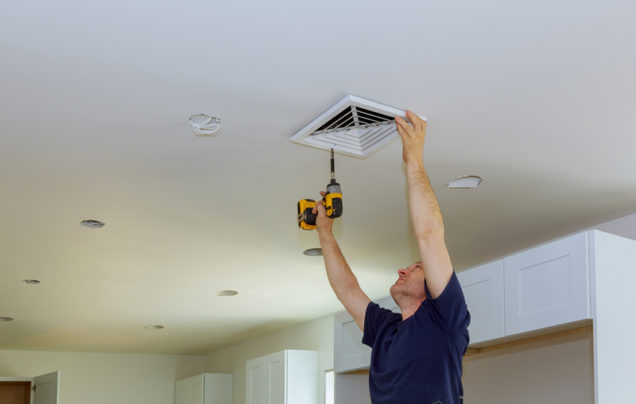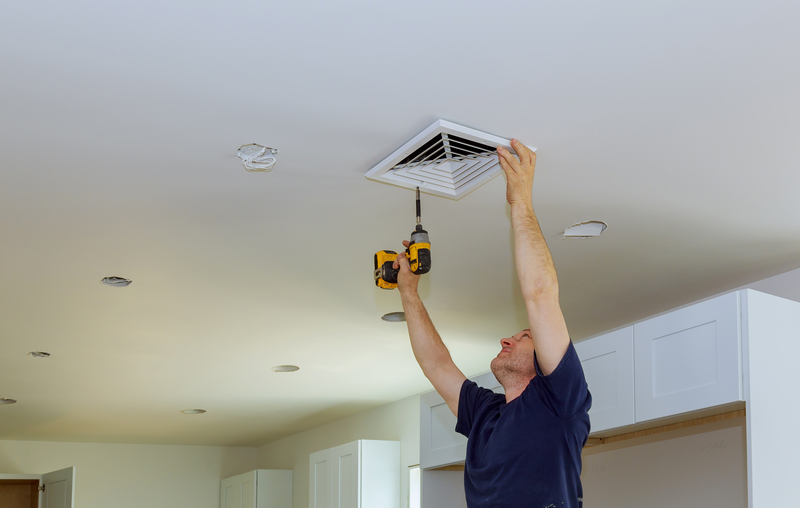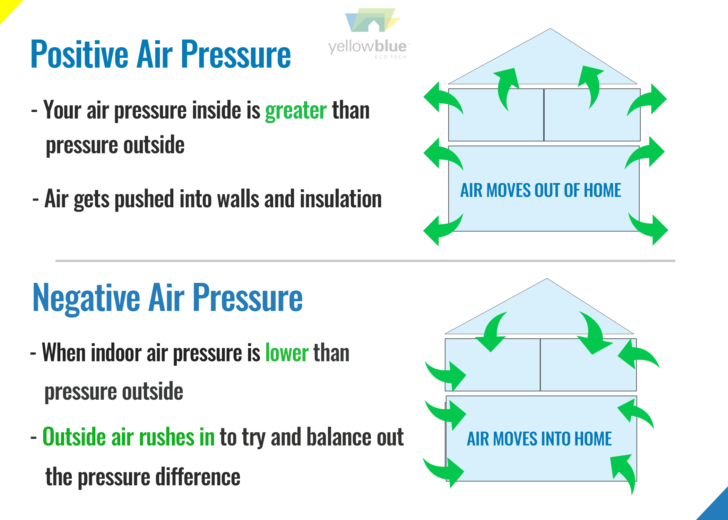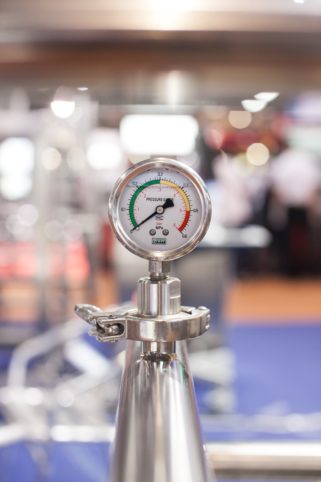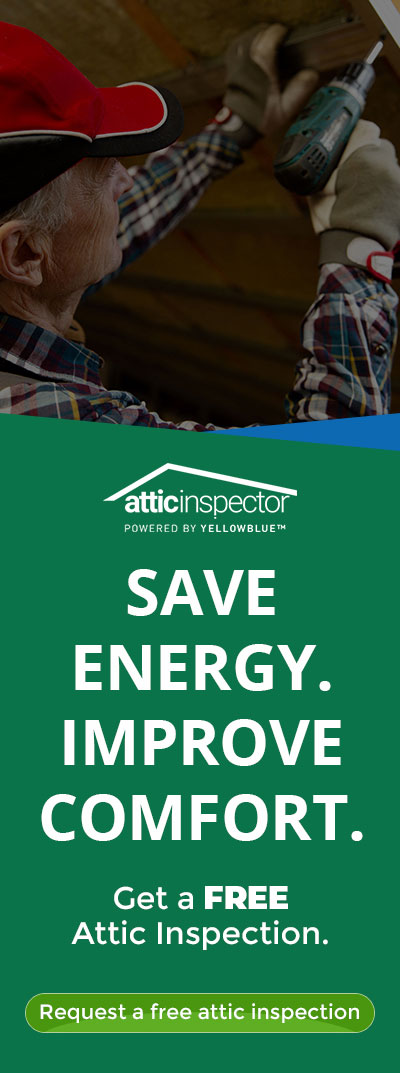Have you ever experienced doors in your home unexpectedly open or close? Do your curtains sway when the windows are shut?
Do you hear whistling and other odd noises? Are some rooms unusually hot or cold?
Do you feel random rushes of air?
Fortunately, this article isn’t about paranormal activity in your home. Unfortunately, we’re discussing something that is almost as scary and is fairly common in homes of all ages.
Negative air pressure.
What is negative air pressure?
Negative air pressure occurs when the pressure inside your home is lower than the pressure outside. We’ve talked about the importance of insulation for an energy efficient home. However, over-insulating may restrict fresh air from entering the home. Fresh air in the home is a good thing. Stale, polluted air trapped in your home is not.
Appliances like bathroom fans, central vacuums, range hoods, and dryers push air out of the home. The amount of air pushed out can be significant with no easy way for replacement air to re-enter the home. The resulting negative air pressure means the home prioritizes trying to suck air in rather than pushing it out.
The effect that negative air pressure has on your home can vary depending on the season.
In the winter, negative air pressure draws cold air in and increases heating costs. Your furnace needs to work overtime to compensate for the cold air that has entered the home. The air in your home becomes dry and causes nose bleeds, chapped lips, and static.
In the summer, negative air pressure draws hot air in and increases cooling costs and discomfort. This warm, humid air coming in from the outside may cause condensation and create a host of problems on its own. Condensation can lead to mold and mildew growth and deterioration of home building materials.
What causes negative air pressure?
Negative air pressure and HVAC systems are linked. Your air conditioner and furnace end up working harder to counteract the outside air from rushing into your home. Negative air pressure is a dangerous and expensive problem in homes across the country.
Two causes of negative air pressure are unable to be controlled: wind pressure and the ‘stack effect’.
Wind forces air in on some sides and forces it out on others. The only way to stop wind pressure is to be vigilant when you are sealing up your home.
The ‘stack effect‘ occurs when warm air rises to upper levels in your home. More pressure is created on upper levels and the air is pushed out, while air is drawn in on lower levels to compensate.
Although it is difficult to avoid wind pressure and the stack effect, there are some ways you can make a difference in your home’s pressure:
Duct Leakage
Air distribution is compromised if your ductwork is poorly designed or has holes. Negative air pressure occurs when air leaks out or into the ducts. Luckily, this is avoidable. Pressure test and measure leakage from your ducts to ensure that they are well-sealed. In addition to negative air pressure, the Department of Energy states that poorly sealed ducts contribute to higher energy bills.
Fan Motor Speed
The problem here can be as simple as an air conditioner that is set too high. If a blower motor is running at maximum and forcing too much air into a room, it can result in an off-balanced space.
Combustion Appliances
Gas stoves and fireplaces burn fuel, remove oxygen, and require makeup air. Houses with negative air pressure may cause flue gases to backdraft into your home.
Exhaust Fans
Similar to combustion appliances, exhaust fans can remove too much air and cause negative air pressure. This can be dangerous and result in backdrafting of appliances, leading to a buildup of deadly fumes including carbon monoxide.
Central Vacuums
Traditional plug-in vacuums do not create depressurization like central vacuums. Central vacuums send household air outside and can interfere with the air supply for other appliances in the home.
Off-balance HRVs
Heat recovery ventilators must be professionally balanced to maintain even air pressure. If not balanced, HRVs can provide too much or too little air compared to the amount they are expelling.
What could happen in a home with negative air pressure?
Poor Air Quality
Negative pressure is a common problem in residential buildings across the United States. Air travels through crawl spaces, basements, and other dirty spaces before reaching living areas. This leads to diminished air quality, which directly results in adverse health effects. The Environmental Protection Agency (EPA) discusses the immediate and long-term health effects of indoor air pollution.
Radon Poisoning
Air pulled in through cracks in the basement floor carry in gasses that are heavier than air – namely radon. Radon poisoning is known to damage the lungs and cause lung cancer.
The EPA estimates that 1 in every 15 homes across the United States has elevated radon levels.
Carbon Monoxide Poisoning
Backdrafting of carbon monoxide can occur from fuel-burning appliances such as furnaces, boilers, and water heaters. Energy Star suggests mechanical ventilation reduce radon and carbon monoxide in the home.
The Department of Energy suggests that all homes with fuel-burning appliances install a carbon monoxide detector.
Why should I fix my home’s air pressure?
Without negative air pressure in your home, you’ll have:
- More comfort
- Better indoor air quality
- No drafts
- No backdraft of flue gases
- Longer appliance life
- Lower utility bills
It is important to maintain a home with balanced air pressure. This ensures that every room receives the right amount of air. Balanced airflow keeps all rooms at an ideal temperature throughout the year. In addition to keeping members of the household comfortable, balanced airflow improves energy efficiency and lowers energy costs.
How do I fix my home’s air pressure?
A home with negative pressure lacks a source of fresh air. It may seem counterproductive to loosen up an airtight home to make it ‘healthy’, but bear with us.
It’s important for your home to breathe. Simple measures like repairing ducts and adjusting fan motors can fix air pressure problems. Moreover, your home may require additional ventilation. In the end, it’s about correcting and controlling air flow.
Yellowblue™ is equipped to solve your home’s negative air pressure problems. Yellowblue™ contractors are experienced and will work to ensure that your home is balanced, safe, and healthy. Contact your nearest independent authorized yellowblue™ dealer to help you optimize your attic insulation.

